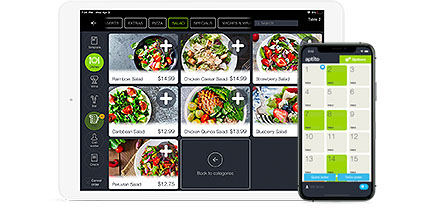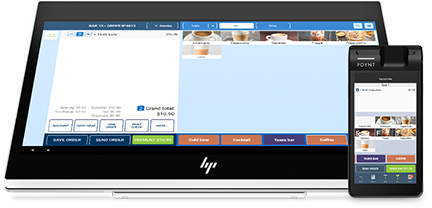
How to Open a Coffee Shop: Strategic Planning and Cost Calculation6 min read
A small café averages operating income of 2.5 percent of gross sales. The percentage is much smaller than the gross margins for the largest coffee chains that can earn up to 70 percent. In order to make such a business profitable and successful, you’ll have to engage in a number of key preliminary steps before getting started.
The business model you choose will be one of the determinants for success in the future. If you’re thinking of opening your own coffee shop, you’ll need to explore the three primary business models– purchasing a franchise, buying an existing business or starting from scratch. Each option comes with its pros, cons and operational expenses.
Having a good idea about the cost of starting a coffee shop will help you ensure financial sustainability in the very beginning. According to various estimates, the sum ranges between $80,000 and $250,000 depending on the business model, the location, the size of the coffee shop and the types of services you intend to offer.
Doing your research and comparing possibilities side by side will make it much easier for you to determine the associated costs, the preliminary steps you’ll have to go through and the eventual niche specialization that will help you win customers for your coffee shop.
Here are the main five steps to consider:
1. Focus on a Solid Business Plan First
What exactly is the purpose of your business? What service range will you offer? What’s the target clientele? These are some of the most important questions your coffee shop business plan will have to address.
Your business plan will spell out all of the steps you’ll have to undertake to open up a coffee shop. A good business plan identifies and outlines the following:
- Your key objectives (for the first year and beyond)
- Mission
- Funding proposal
- Company summary (ownership, operations, locations and facilities)
- Product range
- Market specifics
All of these work together to give you a clearer idea about the biggest obstacles, the opportunities ahead of you, the key steps required to establish your market position and the startup budget needed to begin operating your coffee shop.
2. Choose the Right Location

Venue accessibility and convenience will be two of the essential factors for growing the popularity of your coffee shop quickly.
The cost of the space will be dependent on two things – size and location. If you’re buying an existing coffee shop, the location will be predetermined for you. Still, you have to make sure it is the right one to support sustainable business growth.
There are a few additional essentials to consider in terms of renting or buying the right space.
While many potential coffee shop owners will be drawn to a central location, it’s not always the best one for sustainable business growth.
High traffic locations have the steepest rents. Malls rank among those locations and they’re not always manageable for small coffee shop owners. A storefront would be a much better choice due to the fact that the rent will be manageable and the visibility will still be very high.
Vehicle traffic, the availability of parking spaces and proximity to pedestrian areas will also have to be considered when choosing a venue and determining whether the cost of the space is justified.
3. Acquire the Necessary Equipment and Supplies
Now that you have a business plan and a space, you’re ready to start acquiring the equipment and supplies necessary to open your coffee shop and welcome your first customers.
Equipment, Furniture, Renovations
At the very least, you will need:

- an espresso machine
- a coffee grinder
- a water filtration system
If you plan to offer additional products (juices, iced coffees, smoothies, desserts, sandwiches, etc.), you’ll have to consider the purchase of equipment required for their making, as well.
The machines will be the most expensive purchase. Other than those, you’ll need furniture, decorations, a music system and other essentials for setting the ambiance.
If the venue is an older one, you’ll have to factor in the cost of carrying out renovations. Renovations will also necessitate application for the required permits. There may be filing fees and a waiting period before you can begin work on the venue – research these essentials well in advance.
Supplies
Next, you’ll have to think about the cost of inventory and supplies required at the very beginning.
It may be a good idea to acquire coffee beans worth at least $1,000 dollars at first. Tea worth the same amount is also an appropriate choice. Other supplies to account for include:
- paper cups
- china
- napkins
- stirrers
- sugar and sweeteners
- milk
- straws
- lids
- bottled water
- fruits for juice making
- spices like cinnamon and nutmeg, cocoa powder
- spoons, forks, etc.
As your coffee shop becomes operational, you’ll get a better idea of the ongoing expenses and whether an adjustment in supplies is required.
4. Ensure Effective Financial Management of Operations
To open a coffee shop, you’ll need a POS system, accounting software and even a bookkeeper to help you maintain your financial documentation in perfect order.
Modern POS systemsare relatively affordable and you’ll have to spend approximately $50 to $200 ollars per month on software. The hardware is purchased just once and the cost will be between $1,200 and $4,000.
While you will have to spend an upfront sum on the acquisition of hardware, it will pay itself off in a relatively short period of time. A POS system is an absolute essential in terms of making inventory, keeping track of transactions and ensuring adequate accounting. Many POS solutions can be integrated with accounting software for even better financial management.

Hiring a professional accountant to handle bookkeeping for you is also very important. Regardless of the fact that your coffee shop may be small at the beginning, there will still be bookkeeping tasks to handle on a regular basis. Outsourcing the process to a professional will free some time you can focus on strategic aspects of business operation.
You don’t necessarily have to choose an accounting firm. Freelance professionals will be more than capable of handling your bookkeeping without costing you a large sum on a monthly basis.
5. Consider Your Staffing Needs
While a small coffee shop that has just gotten established will need only a few staff members, you should be planning for the future.
Staffing costs need to be featured in your business plan right from the start. What will your staffing needs be in a year? In five years? Base the decision on the estimated growth you’ll be striving for.
Both food and labor costs are defined as prime costs in the restaurant business.
A simple formula states that prime costs should not exceed 60 to 65 percent of the total revenue. This is an achievable cost for coffee shops (especially in comparison to restaurants and bistros that have more extensive staffing needs) but you should still anticipate staffing expenditure from the start.
These calculations, as well as a few other considerations (marketing, compliance, space development and future growth) will help you find out if you can afford to launch your coffee shop business. While a coffee shop will require some investment, this is the type of business in the food industry bound to deliver the highest returns.
The potential is high, especially if you’ve been careful in terms of crafting a solid business plan. This way, the risk will be minimized and you’ll find it much easier to manage the costs and ensure sustainable growth in the long run.



